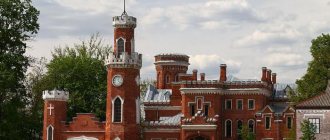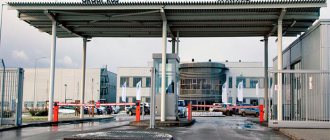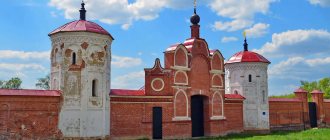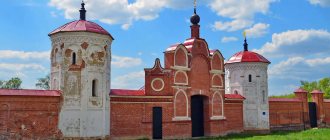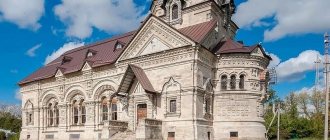The Vologda region is located in the north-west of the country and is considered the most beautiful region of the North. With a satellite map of the Vologda region it is easy to find ancient cities with a rich history: Veliky Ustyug, Cherepovets and Vologda.
The region is known for its magnificent natural and historical attractions, as well as giant industrial enterprises.
The map will help you make a thorough trip plan and choose the best routes. This is an invaluable companion on any journey.
The relief of this territory is low-lying plains with numerous lakes. A detailed map of the Vologda region will allow you to examine the features of the relief. There are many rivers, swamps and lakes in the region. The region occupies a vast territory.
General information and history of Vologda
According to official data, in 1147 the monk Gerasim crossed the Vologda River and founded the Trinity Monastery near the Kaysarov stream. In turn, the city came from the monastery. “Tales of the Miracles of Gerasim of Vologda” and “The Chronicler” by Ivan Slobodsky speak about this. Data from archaeological excavations reveal the first signs of the existence of the settlement a little later - in the 13th century. Vologda was first mentioned in writing in 1264 - as a peripheral possession of Veliky Novgorod (agreement with the Grand Duke).
Autumn Vologda
In those days, Vologda was a small settlement with a population of 1 (XV century) to 4 (XVIII century) thousand people. At the same time, due to the peculiarities of its geographical location - the center of the North-Western region, the center of the trade route between Russia and the Scandinavian countries, in the border with Poland, the city steadily became a powerful cultural center. Significant architectural monuments appeared at the turn of the 15th and 16th centuries. In particular, in 1567 the Vologda Kremlin, also known as the City and Nason-gorod, was built.
Vologda Kremlin and St. Sophia Cathedral
Until the 19th century, Vologda remained a small town on the river of the same name with a population of no more than 10 thousand people, mainly engaged in agriculture, fishing and trade. Politically, at first it walked under the hand of Novgorod (then still the Great), then it remained independent for a short time, and then it was swept up by the expanding Muscovy.
Unlike many Russian cities, it safely escaped the Tatar-Mongol yoke, but in the troubled times of False Dmitry, the Poles got here and thoroughly plundered and destroyed the city, so that there are not enough historical values older than 1612 left today.
Vologda was the main transit point in trade with Denmark and England; Peter I further strengthened its importance by building a large military base and shipbuilding workshops there. But, as often happens, he also destroyed this meaning by building St. Petersburg, which became a new “window to Europe.” Vologda quickly fell into disrepair and began to develop again only with the construction of a railway line to St. Petersburg and the advent of Soviet power.
Routes on the map of Vologda. Transport infrastructure
Vologda is a major transport hub in Russia, as can be seen on the map at the numerous intersections of federal highways:
- The M8 Kholmogory connects Moscow, Yaroslavl and Arkhangelsk;
- A114 “Vologda - Novaya Ladoga” runs from Vologda through Cherepovets to St. Petersburg;
- A119 “Vologda - Medvezhyegorsk” goes from Vologda to Vytegra, Petrozavodsk and Murmansk.
The map clearly shows an extensive web of regional roads connecting all the major regional centers of the region. bus station is located next to the railway station on the square. Babushkina regional center.
through the railway junction every day, this is the highest freight intensity in Russia. Currently, construction of a bypass railway around Vologda is underway.
The Transsib railway passes through the Vologda-1 station Trains traveling to the north of the country from Moscow to Arkhangelsk, Murmansk, Vorkuta, Severodvinsk make stops in Vologda. In total, more than 27 long-distance trains and commuter trains depart from the railway station every day.
The previously navigable Vologda River, having become shallow, lost its transport significance.
From the Vologda airport there are flights to Moscow (Vnukovo) and Veliky Ustyug.
Public transport within the city is represented by buses, commercial buses, trolleybuses and minibuses. The wear and tear of rolling stock is quite high; some minibuses and commercial vehicles duplicate municipal transport routes and delay passenger traffic. The advantage of urban transport is the availability of comfortable, large-capacity buses, 160 in total. 50 bus routes and 3 trolleybus routes cover all areas of the regional center.
Ecology and climate of Vologda
The land of white nights; Vologda owes this marvel to the influence of the northern seas. The distance to St. Petersburg (Baltiyskoye) is 660 kilometers, to Arkhangelsk (Severnoye) - 800 kilometers. According to science, this is called a “temperate continental climate zone,” but more simply, it is a long winter with sharp temperature changes - from -15 to -5 within a day and back, and a short hot summer.
Winter Vologda
The level of air pollution in the city is prohibitive. The main blame is placed on motor transport. Mountain statistics The administration recorded 103,563 units of equipment at the end of 2011 (excluding passing vehicles). Or, more than 1 car for a family of 3 people. According to environmentalists, vehicles account for 80% of all emissions into the atmosphere. This is an objective fact, which is hardly possible to change.
There is something that depends on the management of enterprises. The largest stationary sources of pollution are fuel and energy companies - MUP Vologdagorteploset, the Main Directorate of JSC TGC-2 for the Vologda Region (Vologda Thermal Power Plant), the construction industry - JSC Agrostroykonstruktsiya, the machine-building complex - JSC Vologda Optical-Mechanical. As a result of their intense work activity, the maximum permissible concentration of substances of humic origin in surface waters is greatly exceeded.
Smoke from thermal power plant
The main ingredients that pollute the Vologda River are substances, the increased content of which is determined by natural factors: copper, zinc, iron, COD. The anthropogenic component is most clearly visible in watercourses, the flow of wastewater into which significantly exceeds their natural flow. An analysis of surface water carried out by independent experts described the situation as unacceptable. In none of the sites within the city and its surroundings does the degree of water pollution even come close to the maximum permissible standards.
The total mass of waste in the city is 207,000 tons. More than 25% of them are environmentally hazardous.
Vologda on the map of Russia: geography, nature and climate
The geographical position of Vologda on the map of Russia is extremely favorable; it is equidistant from both Russian capitals: Vologda is about 500 km from Moscow, and 650 km from St. Petersburg. 200 km to the south is Yaroslavl, located on the banks of the Volga - the main waterway of the European part of Russia.
The satellite map clearly shows that the city in the central part is crossed by a river. It has the same name as the city (Vologda) and is a tributary of the large Sukhona river. The city was built in the southwestern part of the Sukhona depression. Vologda is located on a hilly flat area, its height above sea level is 120 m.
In addition to the main water artery, the settlement is crossed by the Shogrash and Zolotukha rivers, both flowing into the Vologda River. There are many small lakes and ponds on the territory of the city and in its surroundings, which were left as a legacy by the glacier that covered the territory of the entire Vologda region about 10,000 years ago.
The city is located in an area of temperate continental climate. Winter in Vologda is long and cold, summer is short but warm. The weather is unstable throughout the year, which is explained by the invasion of air masses from the Arctic, bringing frosts or warm Atlantic air in the spring. Its invasion provides summer heat or winter thaws.
The only frost-free month of the year is July, the average temperature of the warmest month is +17.5°C, the maximum values reach +34°C. In any other month of the year, negative air temperatures are possible. The coldest month is January, its average temperature is -10.8°C, the lowest temperature in the first month of the year is recorded at -47.1°C.
Population of Vologda
Vologda is a very young and, one might say, mono-ethnic city. According to data at the beginning of 2014, 308 thousand people permanently reside here. Including men - 44.2%, women - 55.8% of the total population. The absolute dominant group is working age - 65.7%, younger - 15.3%, older - 19% of the total number. Interestingly, 50,000, or every sixth Vologda resident, are classified as “officials”. There is no such concentration of administrative workers in any other city in the Russian Federation.
In the national division, Russians more than prevail - 96.5%. In 2nd place are Ukrainians - 1.4%, in 3rd place are Belarusians - 0.6%. Tatars, Gypsies, Moldovans, Chuvashs and Azerbaijanis are included in the “other nationalities” column.
For comparison: from the beginning of the 18th to the end of the 20th century, the population of Vologda developed dynamically - from 4,100 people according to the Census of 1712 to 306,000 according to the results of 1988. With the collapse of the Union there came a certain decline. Now it has been partially overcome. Scientists are not inclined to idealize the situation and associate it with ongoing urbanization. Simply put, rural residents of working age en masse move to the regional center for a better life.
However, the factor of fertility, which took place at the end of the USSR, in 1988-1991, is not denied. It is still visible today. More children were born last year than the year before, which, in turn, was slightly ahead of 2009. So far, these numbers are not so significant to draw at least some conclusions from them.
Districts and real estate of Vologda
The administrative-territorial division of Vologda is very simple, there are only 2 units: the city itself and the village of Molochny.
Vologda map
The center is limited by the triangle “station (south-west) - Gorky and Levichev streets (east) - Peace Park and Nekrasov street (north). The main city attractions, architectural monuments, administrative and shopping centers are located here.
The historical center is conventionally divided into districts: City, Verkhniy Posad, Nizhny Posad and Zarechye. The administrative center with regional and city administrations is located in the area of Drygin and Revolution squares. The largest number of shops, catering establishments and the city market are located in the area of Mira, Batyushkova, Herzen, Lenin, Maria Ulyanova streets. The tourist center of the city, where the main branches of the Vologda Museum-Reserve are located, the Kremlin - the architectural ensemble "St. Sophia Cathedral - Bishop's Courtyard" is located within a 5-10 minute walk - around the Kremlin Square.
Revolution square
It is clear that real estate prices are quite consistent: rental housing - from 400 rubles per day, up to 15,000 per month, purchase/sale - from 1.7 million rubles for a one-room apartment. The cost of renting commercial real estate and non-residential premises ranges from 650 to 1000 rubles per square meter monthly. Sales: about 50,000 rubles per square meter
The buildings of the 19th - early 20th centuries have been preserved in the Zasodimsky area, Revolution Square, and the VI Army embankment. For the most part, “compensatory” development is taking place - new buildings imitating traditional Vologda wooden houses. In the 60-80s, a significant part of the historical center was built up with standard multi-story buildings.
Embankment 6 Army
The main urban development occurs in the southern and northeastern parts of the city. Here, in the microdistricts of the Bearing Plant, Byvalovo, Zavokzalny, microdistricts 5 and 6, and Eastern Zarechye, up to 60% of the city’s population lives.
Areas of individual residential development are located in the Oktyabrsky garden village, Zarechny district, and the village of Lnokombinat. These areas are of very little historical value. Since the 60s of the last century, they have been built up with standard 5-9-12-story buildings. Real estate here is much more affordable: daily apartment rent starts from 150, monthly rent from 3,000, one-room apartments start from 800,000 rubles.
Zarechye
The Center enjoys the greatest respect at city forums. Every third visitor would like to live here. 27% dream of Leningradskaya Street. 18% give preference to the 5th and 6th microdistricts. The center is very large. It would be nice to define what is meant by this word. There are quiet, cozy and calm streets of Batyushkov. S. Orlova, Maria Ulyanova.
Luxury housing is being built on the site of the former Progress factory. This is appreciated and in demand. With the streets of Mira, Zosimovskaya, Kozlenskaya, Yaroslavskaya, everything is not so clear - noisy, polluted, unkempt in places. Leningradskaya is the longest street in the city, 4.5 kilometers long. It stretches from east to west from the Vologda River to the Okruzhnoye Highway. Its fans claim that all conditions for a modern comfortable life have been created here - large shopping and entertainment centers, shops within walking distance, fresh asphalt, and - the center is at hand. Opponents point to the same noise and traffic problems. Especially during rush hours. Not everyone notices traces of landscaping either.
Leningradskaya street
5th, 6th microdistricts - ordinary sleeping bags. If there is transport accessibility, Maxi class stores (Pyaterochka, Magnit, grocery store and 3 wishes), kindergartens - 100 meters from the entrance (but it’s still difficult to get there), playgrounds and natural areas plantings. The inhabitants of these territories do not find any obvious disadvantages. Unlike the residents of Vodniki, Zarechye, Zavokzalny and other depressed people, who “don’t need it for nothing.” The characteristic features of the latter are remote transport access, broken asphalt and houses of dubious value for living. In general - ignore, deep and complete.
Sights of the city of Vologda
Ancient, cozy, kind-hearted Vologda is famous for its beauty and unique appearance. There is only one such city in Russia! Thousands of tourists from Russia and abroad come to get acquainted with its unique sights. The most interesting places in the city are:
- Vologda Kremlin , located on the picturesque bank of the Vologda River in the city center. Its fortress walls and buildings became the “calling card” of the city;
- next to the entrance to the Kremlin stands the majestic St. Sophia Cathedral , which was erected by order of Ivan the Terrible himself (XVI century). This is the first building in Vologda built not from wood, but from stone. On the map with houses it is listed at 15 Orlova Street;
- The decoration of the Kremlin Square of Vologda is the Resurrection Cathedral , introduced in the 18th century in the Baroque architectural style. Currently it houses the Vologda Art Gallery;
- on Kremlin Square, at house 12, opposite the buildings of the Vologda Kremlin, there is the Museum of Vologda Lace . It presents the beautiful creations of Vologda lacemakers and highlights the history of lace making;
- The house of Peter I stands on the high bank of the Vologda River; it is famous for the fact that Tsar Peter Alekseevich stayed there several times during his visits. The small stone building with its unique architecture has become one of the symbols of the city. The house is located at Sovetsky Prospekt, 47;
- Among more than four dozen churches in Vologda, the Church of Alexander Nevsky , located near the Kremlin Square on Orlova Street, 12, stands out. In the middle of the 16th century, the miraculous icon of St. Nicholas the Wonderworker was kept within its walls;
- on the outskirts of the city, on Monastyrskaya Street, 2, there is an active Spaso-Prilutsky Monastery . Anyone can visit this unique architectural complex.
There are many monuments of wooden architecture in Vologda. Beautiful wooden buildings are concentrated mainly in the central area of the city. This is the Zasetsky house (Leningradskaya St., building 12), the Puzan-Puzyrevsky house (Gertsen St., building 35), the Volkov house (Leningradskaya St., building 30), the house-museum of the merchant Samarin with the famous carved palisade. The city has the most interesting museums, for example, the Vologda Link Museum , the Pharmacy Museum, etc.
City infrastructure
Everything seems to be fine with public transport in the city. 47 bus and 5 trolleybus routes cope satisfactorily. They operate from 5 am to 2 am. Problems may arise with personal vehicles. If you look at a map of the city, you will notice that Vologda is dissected both by railway tracks (the largest marshalling station of the Northern Railway is located in Vologda) and by the Vologda River. If with the railway everything is more or less, then there are only 3 bridges across Vologda (large ones - 2), which should be taken into account when moving around the city. If a serious accident occurs on one bridge, traffic jams may occur on others.
Now about other things that, although not key, can play a very serious role in choosing a place to live. For example, education. Primary and preschool education in Vologda is developed quite well, although not uniformly. If the center, the 5th -6th microdistricts can be said to be replete with kindergartens and schools, then the same Zavokzalny or Byvalovo do not shine.
With secondary vocational education, everything is also in order - there are all kinds of colleges in abundance, it’s probably not worth listing. And the highest level is Vologda State Dairy Academy named after. N.V. Vereshchagina (Molochnoe village) is one of the best and highest educational institutions in Russia, the first in the country in its field. The Academy helped the development of agricultural production throughout our homeland.
Vologda State Dairy Academy
Also on the territory of the city there are “standard” universities for all settlements of the country, such as the Vologda State Technical University and the Vologda State Pedagogical University. The Vologda Institute of Law and Economics of the Federal Penitentiary Service of Russia produces specialists with a legal education. Branches of the capital's universities also operate in Vologda. The most famous of them is a branch of the Moscow State Law Academy named after. O. E. Kutafina and a branch of the North-Western Academy of Public Administration.
I don’t want to talk too much about housing and communal services - hot water and heating are supplied all year round, electricity from the Vologda Thermal Power Plant and cold water are not of very high quality (water intake is, fortunately, not from the Vologda River, but from a nearby lake) are also supplied, repair work is occasional are produced. But the tariffs for all this do not at all correspond to the status of Vologda as an average Russian city.
Central districts of the Vologda region on the map
The vast territory of the region is divided into many districts on the map of the Vologda region. Important areas of the city include:
- Babaevsky district is located in the west of the region. Its territory extends to the Mologo-Sheksninskaya lowland.
- Babushkinsky is considered one of the cleanest districts in the region . There are few businesses in its area. In the vicinity of the city there is a taiga massif. The area is a balneological resort. Salt mines were developed in the area, and subsequently healing mineral springs were discovered. A map of the Vologda region by district will help you find them.
- The central regions include the Veliky Ustyug region . Important industries include wood processing and forestry. In the area there is a plywood mill, a timber industry enterprise, a distillery, as well as tanneries and the production of natural fabrics.
- The Sokolsky district also stands out . It is located on the territory of the Prisukhonskaya Lowland. Important transport lines pass through the area. This is a highway, a waterway along the Sukhona River, and also a railway line.
- The map of the Vologda region displays in detail all objects of the Sheksninsky district . There are railway stations in the area: Shelomovo, Sheksna, and Chebsara.
Enterprises and work in Vologda
Let's consider the most promising (locally) employment options. JSC Vologda Bearing Plant is the largest manufacturer (more than 18% of total production) of bearings in Russia. The product is a hot commodity, a product in demand, there are no plans to reduce demand for it in the coming years, which means production should not suffer. However, against the background of the general decline in production in Russia (as well as internal problems), salaries at the plant are not too high, and there are not a lot of jobs.
Vologda Bearing Plant
Next is Elektrotekhmash OJSC, the production of oil radiators and pumps, products that are not as popular as bearings, but nevertheless quite popular. On the basis of Elektrotekhmash, Vologda Pipe Rolling Plant LLC was created, which, oddly enough, produces pipes. Both enterprises belong to the same management company and deserve attention as potential employers.
OJSC “Vologda Optical-Mechanical Plant” is one of the few enterprises of the former defense industry that, after its collapse, managed not only to survive, but also to remain a competitive enterprise. It is still assembling its direct products (sights) and mastering the production of simple electronic devices (complex ones, of course, will clearly be inferior to foreign analogues in our market). At the time of writing, they were even recruiting staff in connection with the expansion, which is already saying something.
Vologda Optical-Mechanical Plant
The former giant of the textile industry, Vologda Flax Mill, unlike Optics, did not survive the 90s. The military began to order fewer trucks, and they no longer needed tarpaulins... although this is only a fraction of the plant’s problems. As a result of long agony and disgusting management, from a leader in the production of flax products in Russia, the plant has slipped into an outsider even by the standards of the Vologda region, and its future does not inspire hope.
It makes sense to get a job at one of the enterprises associated with the railway (or directly there, if possible): the car repair plant or the Byvalovo Machine Plant (production of gantry and tower cranes), or with the forestry industry: Vologdalestopprom, Vologda Timber Industry, LPK Kipelovo or Soyuzlesmontazh.
The city also has a large food industry sector, well-known dairy production (Vologda Dairy Plant, Vologda Ice Cream) and the production of alcoholic beverages (Variety Vodka Factory). Separately, I would like to note the former workers’ settlement, and now (since 2004) the village of Molochnoye, located 7 km away. from the city limits of Vologda. With a population of 7 thousand people, it can safely be called “Skolkovo of the Russian agricultural industry”: in the village there are 3 agricultural universities, a training and experimental plant and a main center of agrochemical service.
The average salary in Vologda, according to the penultimate data, is 18,000, the latest – 27,000 rubles per month. It is curious that in the fall of 2011 the figure was 20,000. Such jumps can only be logically explained by the fact that the figure “27” is taken for the region as a whole. At the Cherepovets Metallurgical Plant they really earn extremely well - up to 50,000 per month. If you believe the “wanted” advertisements in Vologda, work is extremely rarely paid in excess of 20,000 rubles. More often it is appropriate to talk about 15 - 17,000. At the same time, the pearl of the North is a fairly expensive city to live in by the standards of an average Russian city. Fare - 16, bread - 25, sausage - from 100 rubles.
Economy and industry of the Vologda region
Ferrous metallurgy and electric power are considered an important industry in the region. A map of the Vologda region will allow you to find all the main enterprises in the region.
Important organizations are considered to be a steel rolling plant in Cherepovets, a bearing plant in Vologda, a woodworking plant, and a metal structures plant. The region exports various food products: butter, milk, meat.
The region is also famous for its traditional crafts. This is lace, blackening on silver, and also carved birch bark.
Yandex maps of the Vologda region will help you find important agricultural enterprises related to dairy farming.
Among the interesting cities with a rich cultural heritage are Ustyuzhna, Belozersk, Vologda, and Veliky Ustyug.
Crime
Is life without crime conceivable? Without visible - obviously, yes. One can even remember that the notorious “dashing 90s” passed through Vologda in a very tangential way. It is no coincidence that even then the city did not endow the country with ANY significant criminal authority. The explanation is simple: a lot in the region is connected with units of the Northern Sea Fleet, aviation and strategic missile forces. Many military towns and villages are still classified.
In addition, the penitentiary system is very powerful here. An eloquent example: the well-known “zero kilometer” is located in Vologda. This is the starting point on the way to the most important financial and economic centers of the North-West.
Zero kilometer
As a result, it is quite appropriate to say that the Vologda law enforcement agencies are controlling the situation. However, it is possible that crime has been legalized. Or he went underground. Options are possible. But they remain only assumptions. The problem of nationalism does not arise here either - Vologda is practically mono-ethnic, 97% of the population is Russian.

